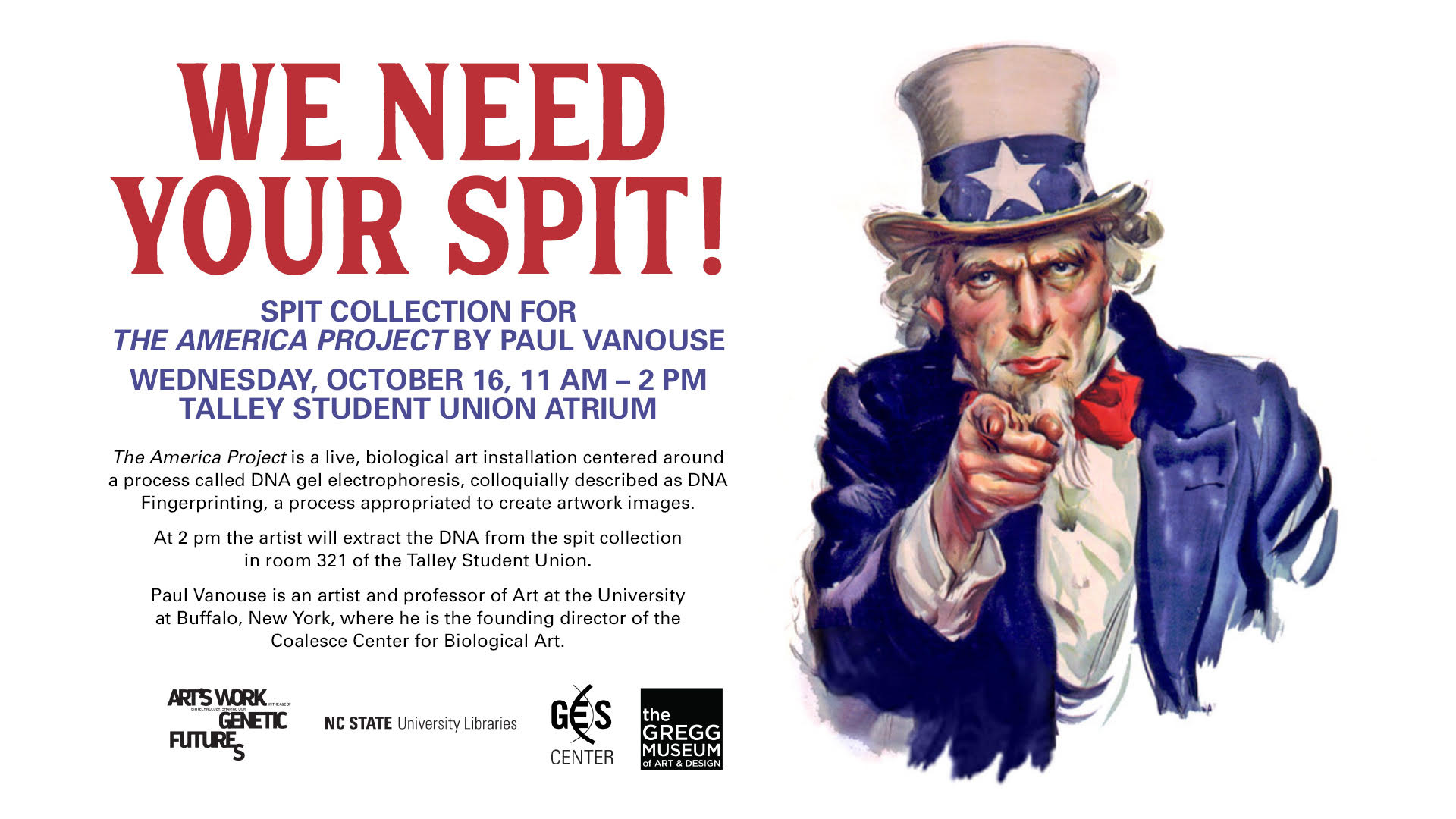
- This event has passed.
Spit Collection for America Project by Paul Vanouse (Art’s Work/Genetic Futures)
October 16, 2019 @ 11:00 am - 2:00 pm
Free
Part 1 – Public Participation:
Spit Collection for America Project by Paul Vanouse
Wednesday, October 16, 11 am – 2 pm, Talley Student Union Atrium
America Project is a live, biological art installation centered around a process called DNA gel electrophoresis, colloquially described as DNA Fingerprinting, a process appropriated to create artwork images. The project premiered at the Esther Klein Gallery, Philadelphia, on October 20, 2016, and received an Award of Distinction at Prix Ars Electronica, Linz, in 2017.
Visitors to the installation will encounter a spittoon in which their donated spit will be collected. On this day, students and other visitors will be offered a one-ounce cup of saline solution and asked to swish for thirty seconds, then to deposit the solution into the spittoon.
During the installation (Part 2 – Public Performance: DNA Extraction), Vanouse will extract the DNA from the combined spit samples. The DNA will not be individuated nor retained: it will be processed as a whole to make iconic DNA Fingerprint images of power—such as a crown, warplanes and a flag—which will be visible as video projections of the electrophoresis gels throughout the exhibition.
PAUL VANOUSE is an artist and professor of Art at the University at Buffalo, NY, where he is the founding director of the Coalesce Center for Biological Art. Interdisciplinarity and impassioned amateurism guide his art practice. His bio-media and interactive cinema projects have been exhibited in over 25 countries and widely across the US. READ MORE
Art’s Work in the Age of Biotechnology: Shaping Our Genetic Futures (Art’s Work/Genetic Futures) is an art-science exhibit and symposium of artists, scientists, and humanities scholars, led by the the NC State University Libraries and the Genetic Engineering and Society Center, held at the Gregg Museum of Art & Design, the physical and digital display spaces of the NC State Libraries and the North Carolina Museum of Art (NCMA). These activities will elicit discussion about genetics in society through the lens of contemporary art and offer viewers new ways to think about their role in the genetic revolution.
By combining science and art and design, the artists, and artworks chosen for display, will contextualize genetic engineering by bringing it out of the lab and into public places; challenging viewer’s understandings about the human condition, the material of our bodies, and the consequences of biotechnology. The exhibit(s), integrated curriculum, and cross-campus dialogues will raise awareness and discussion about biotechnologies and their consequences in our society, while drawing in art practices for reaching new communities.
Art’s Work/Genetic Futures: October 17, 2019 – March 15, 2020
Details and related events at: go.ncsu.edu/artswork